1. Park HY, Shin JH, Boo HO, Gorinstein S, Ahn YG. Discrimination of
Platycodon grandiflorum and
Codonopsis lanceolata using gas chromatography-mass spectrometry-based metabolomics approach. Talanta. 2019; 192:486–491. PMID:
30348422.

2. Ji MY, Bo A, Yang M, Xu JF, Jiang LL, Zhou BC, Li MH. The pharmacological effects and health benefits of
Platycodon grandiflorus—A medicine food homology species. Foods. 2020; 9:142. PMID:
32023858.

3. Zhang L, Wang Y, Yang D, Zhang C, Zhang N, Li M, Liu Y.
Platycodon grandiflorus – An ethnopharmacological, phytochemical and pharmacological review. J Ethnopharmacol. 2015; 164:147–161. PMID:
25666431.

4. Nyakudya E, Jeong JH, Lee NK, Jeong YS. Platycosides from the roots of
Platycodon grandiflorum and their health benefits. Prev Nutr Food Sci. 2014; 19:59–68. PMID:
25054103.

5. Li W, Tian YH, Liu Y, Wang Z, Tang S, Zhang J, Wang YP. Platycodin D exerts anti-tumor efficacy in H22 tumor-bearing mice via improving immune function and inducing apoptosis. J Toxicol Sci. 2016; 41:417–428. PMID:
27193733.

6. Huang YH, Jung DW, Lee OH, Kang IJ. Fermented
Platycodon grandiflorum extract inhibits lipid accumulation in 3T3-L1 adipocytes and high-fat diet-induced obese mice. J Med Food. 2016; 19:1004–1014. PMID:
27792464.

7. Yoda K, Sun X, Kawase M, Kubota A, Miyazawa K, Harata G, Hosoda M, Hiramatsu M, He F, Zemel MB. A combination of probiotics and whey proteins enhances anti-obesity effects of calcium and dairy products during nutritional energy restriction in aP2-agouti transgenic mice. Br J Nutr. 2015; 113:1689–1696. PMID:
25871498.

8. Macfarlane GT, Steed H, Macfarlane S. Bacterial metabolism and health-related effects of galacto-oligosaccharides and other prebiotics. J Appl Microbiol. 2008; 104:305–344. PMID:
18215222.

9. Lee S, Han EH, Lim MK, Lee SH, Yu HJ, Lim YH, Kang S. Fermented
Platycodon grandiflorum extracts relieve airway inflammation and cough reflex sensitivity
in vivo
. J Med Food. 2020; 23:1060–1069. PMID:
32758004.

10. Singleton VL, Rossi TA. Colorimetry of total phenolics with phosphomolybdic-phosphotungstic acid reagents. Am J Enol Vitic. 1965; 16:144–158.
11. Moreno MI, Isla MI, Sampietro AR, Vattuone MA. Comparison of the free radical-scavenging activity of propolis from several regions of Argentina. J Ethnopharmacol. 2000; 71:109–114. PMID:
10904153.

12. Chua LS, Lau CH, Chew CY, Dawood DA. Solvent fractionation and acetone precipitation for crude saponins from
Eurycoma longifolia extract. Molecules. 2019; 24:1416. PMID:
30974893.

13. Kim EJ, Holthuizen PE, Park HS, Ha YL, Jung KC, Park JH. Trans-10,cis-12-conjugated linoleic acid inhibits Caco-2 colon cancer cell growth. Am J Physiol Gastrointest Liver Physiol. 2002; 283:G357–G367. PMID:
12121883.
14. Cho HJ, Kim WK, Kim EJ, Jung KC, Park S, Lee HS, Tyner AL, Park JH. Conjugated linoleic acid inhibits cell proliferation and ErbB3 signaling in HT-29 human colon cell line. Am J Physiol Gastrointest Liver Physiol. 2003; 284:G996–1005. PMID:
12571082.

15. Kim SR, Park EJ, Dusabimana T, Je J, Jeong K, Yun SP, Kim HJ, Cho KM, Kim H, Park SW.
Platycodon grandiflorus fermented extracts attenuate endotoxin-induced acute liver injury in mice. Nutrients. 2020; 12:2802. PMID:
32933130.

16. Mercenier A, Pavan S, Pot B. Probiotics as biotherapeutic agents: present knowledge and future prospects. Curr Pharm Des. 2003; 9:175–191. PMID:
12570667.

17. Kim MS, Kim WG, Chung HS, Park BW, Ahn KS, Kim JJ, Bae H. Improvement of atopic dermatitis-like skin lesions by
Platycodon grandiflorum fermented by
Lactobacillus plantarum in NC/Nga mice. Biol Pharm Bull. 2012; 35:1222–1229. PMID:
22863917.

18. Li W, Zhang W, Xiang L, Wang Z, Zheng YN, Wang YP, Zhang J, Chen L, Platycoside N. Platycoside N: a new oleanane-type triterpenoid saponin from the roots of
Platycodon grandiflorum
. Molecules. 2010; 15:8702–8708. PMID:
21119565.

19. Jung JA, Noh JH, Jang MS, Gu EY, Cho MK, Lim KH, Park H, Back SM, Kim SP, Han KH. Safety evaluation of fermented
Platycodon grandiflorus (Jacq.) A.DC. extract: genotoxicity, acute toxicity, and 13-week subchronic toxicity study in rats. J Ethnopharmacol. 2021; 275:114138. PMID:
33895248.
20. Choi CY, Kim JY, Kim YS, Chung YC, Hahm KS, Jeong HG. Augmentation of macrophage functions by an aqueous extract isolated from
Platycodon grandiflorum
. Cancer Lett. 2001; 166:17–25. PMID:
11295282.

21. Yoon YD, Han SB, Kang JS, Lee CW, Park SK, Lee HS, Kang JS, Kim HM. Toll-like receptor 4-dependent activation of macrophages by polysaccharide isolated from the radix of
Platycodon grandiflorum
. Int Immunopharmacol. 2003; 3:1873–1882. PMID:
14636836.

22. Sanchez-Ramos J, Song S, Sava V, Catlow B, Lin X, Mori T, Cao C, Arendash GW. Granulocyte colony stimulating factor decreases brain amyloid burden and reverses cognitive impairment in Alzheimer’s mice. Neuroscience. 2009; 163:55–72. PMID:
19500657.

23. Subramanian Vignesh K, Landero Figueroa JA, Porollo A, Caruso JA, Deepe GS Jr. Granulocyte macrophage-colony stimulating factor induced Zn sequestration enhances macrophage superoxide and limits intracellular pathogen survival. Immunity. 2013; 39:697–710. PMID:
24138881.

24. Xia M, Sui Z. Recent developments in CCR2 antagonists. Expert Opin Ther Pat. 2009; 19:295–303. PMID:
19441905.

25. Dufour JH, Dziejman M, Liu MT, Leung JH, Lane TE, Luster AD. IFN-gamma-inducible protein 10 (IP-10; CXCL10)-deficient mice reveal a role for IP-10 in effector T cell generation and trafficking. J Immunol. 2002; 168:3195–3204. PMID:
11907072.

26. Ando I, Tsukumo Y, Wakabayashi T, Akashi S, Miyake K, Kataoka T, Nagai K. Safflower polysaccharides activate the transcription factor NF-κB via Toll-like receptor 4 and induce cytokine production by macrophages. Int Immunopharmacol. 2002; 2:1155–1162. PMID:
12349952.


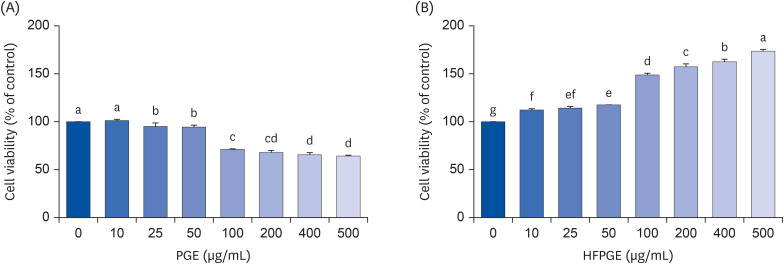

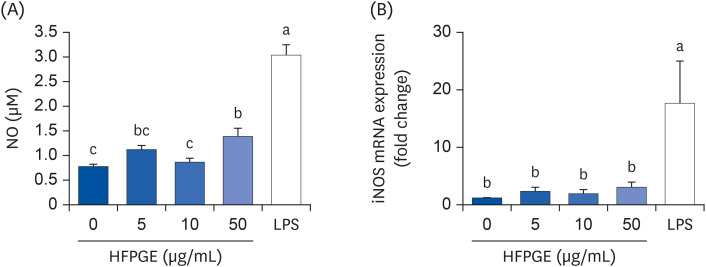
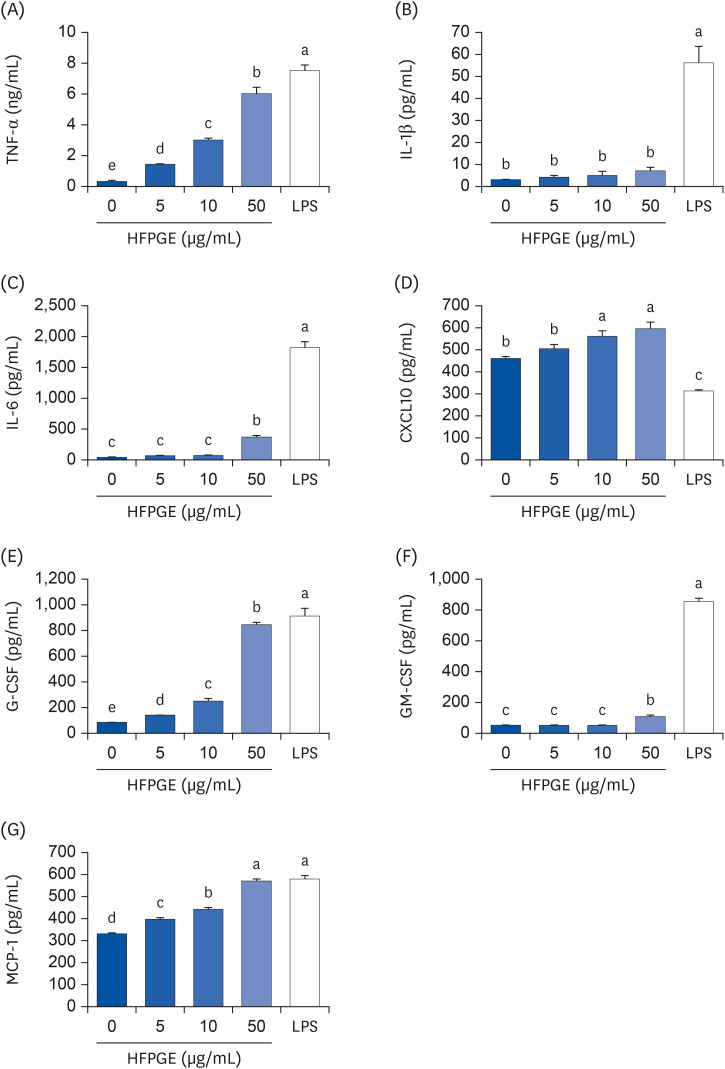
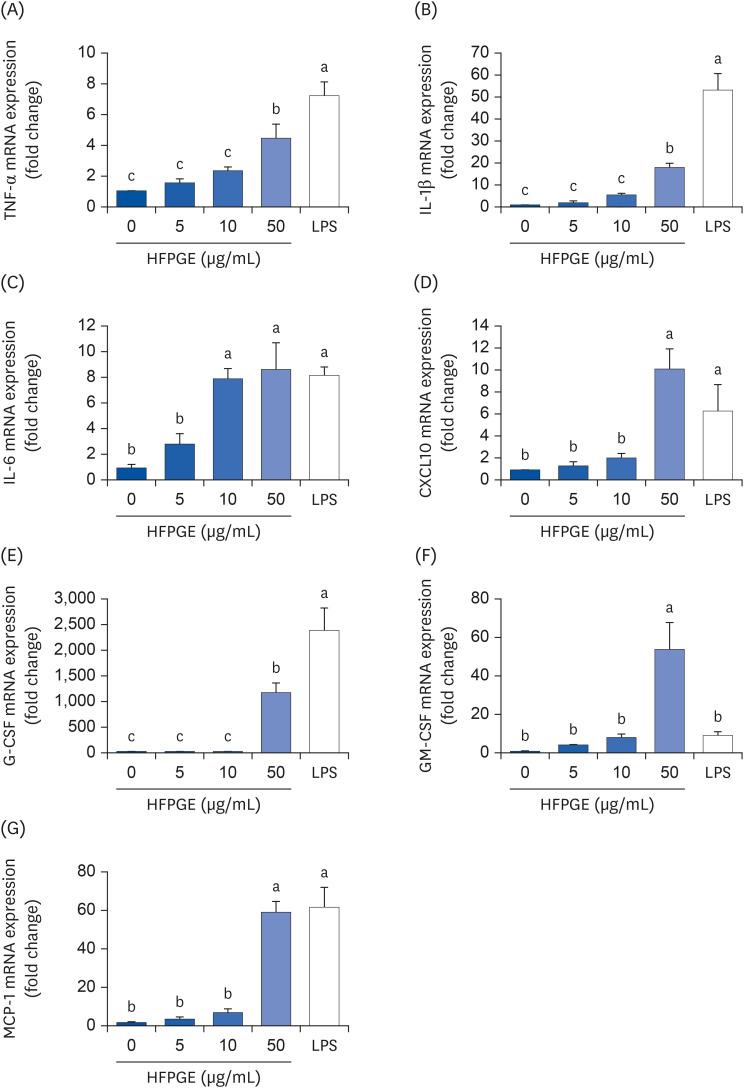

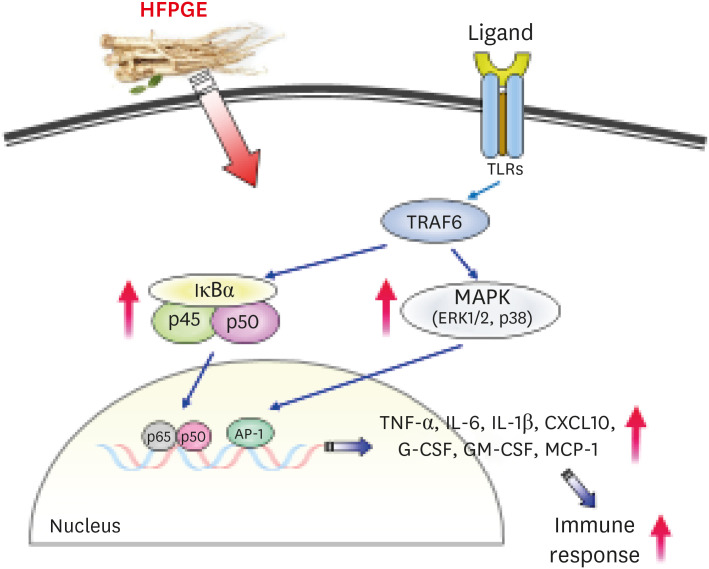




 PDF
PDF Citation
Citation Print
Print



 XML Download
XML Download